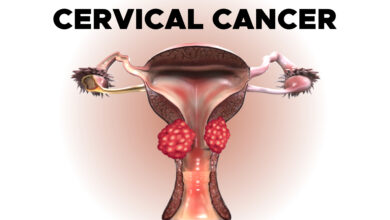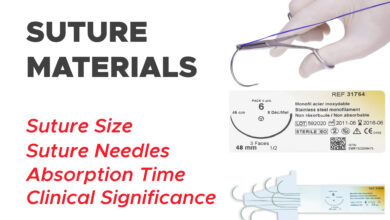
Continuous Midline Laparotomy Closure: Suture Techniques
Search for an Ideal Method of Midline Laparotomy Closure and Suturing Techniques
Midline Laparotomy and Suturing Techniques
Over several generations of surgeons, the mass-layer single stitch suture has been the most commonly used technique for closure of the midline incision. Currently, this single stitch suture technique has had varying degrees of success in its application, especially in difficult secondary closures, e.g., burst abdomen complications.
Parallel to the developments in meshes, there are actually different suture materials applicable for the closure of the abdominal wall in incisional hernia surgery as well as for primary midline suturing.
The initial step – should include a precise median incision, with the linea alba sufficiently freed from subcutaneous fat, followed by dissection of the navel from the fascia, which is necessary in every case.
When closing, it is particularly important to ensure that the continuous suture tension is suitable for the type of tissue and the fascial edges, applying only a light tension on the tissue bridges in order to prevent the formation of “button-hole incisional hernias”.
These criteria – constitute the basis for a complication-free abdominal wall closure.
Any excessive stress on the fascia or the linea alba during the intraoperative period beyond the “physiological extent” during the wakening and extubation phase, with the termination of muscular relaxation, inevitably leads to expansion of the stitch defect, which can subsequently manifest as a “button hole” or even the dreaded burst abdomen.
Ideal Suture Length to Wound Length Ratio
The amount of suture used depends upon the size of each stitch (ie, distance from fascial edge) and stitch interval (ie, space between stitches). For continuous closure, the total length of the suture should be approximately four times the length of the incision.
The use of a shorter length suture due to a reduced stitch size and/or stitch interval increases the risk of hernia formation. In a randomized trial, the incidence of hernia formation (9 versus 21.5 percent, respectively) was lower when the suture length/wound length (SL/WL) ratio was ≥4 compared with <4 .
Regardless of whether interrupted or continuous closure is chosen, sutures should be placed about 10 mm from the fascial edge. Suture widths in excess of 10 mm may increase the magnitude of compressive forces on the tissue contained between the suture hole and fascial edge .
Long vs. Short Stitch Width (Long vs. Short Bite)
A randomized trial comparing long stitch width (>10 mm) with shorter stitch width (5 to 8 mm) identified longer stitch width as an independent risk factor for the development of both incisional hernia and surgical site infection.
Incisional hernia occurred in 49 of 272 patients (18.0 percent) in the long stitch group and in 14 of 250 (5.6 percent) in the short stitch group.
Retention Sutures
Retention sutures have traditionally been used in wounds thought to be at a high risk for dehiscence, but data consistently supporting this technique are lacking, and this technique is associated with increased wound complications and difficulty with ostomy placement and care . However, placement of retention sutures is associated with decreased postoperative incisional pain.
STITCH Trial: Small Bites versus Large Bites for Closure of Abdominal midline incisions.
The “correct” way to close an incision has been a teaching point in residency training for generations. In STITCH trial (double-blind, multicentric, randomised, The Lancet) the authors compared “small bite” closure (5 mm depth x 5 mm travel) with “large bite” closure (1 cm x 1 cm) in patients undergoing a midline abdominal incision.

The primary outcome was diagnosis of incisional or midline hernia at 1-year follow-up, which was based on clinical exam or imaging. A total of 560 patients volunteered to undergo randomization, split 1:1 to “large bite” and “small bite” closure. The two patient populations were well-matched based on comorbidities.
The authors reported a 21% hernia rate with “large bites” and a 13% hernia rate with the “small bite,” thus concluding that the “small bite” exposure was better at preventing hernias. The “small bite” approach did take 4 minutes longer and used more suture. Other complications—surgical site infection, dehiscence, hospital stay—were similar between the groups.
This study demonstrated the current “best practice” for closing abdominal wounds. As mentioned by the authors, some of the hernias were detected radiographically and may not be clinically significant.
Additionally, the suture used in the two closure techniques was different, which could confound the results. From an intraoperative technical standpoint, adhering to the 5 mm vs 1 cm distances may be challenging and may not have been followed in all cases.
Regardless, this study demonstrates that a “small bite” approach may be beneficial in reducing hernia formation. Given that the 1 cm x 1 cm closure is the traditional method to close many incisions, not just midline incisions, we will have to wait to see if this permeates into clinical teaching and practice.


